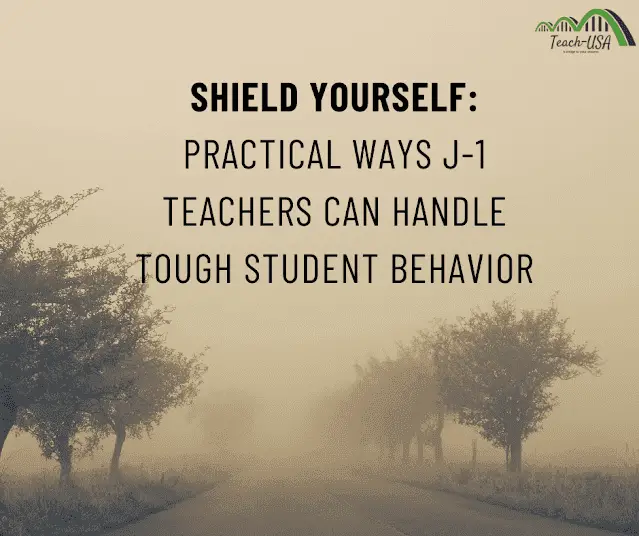Teaching in the United States as a J-1 teacher is an exciting and life-changing experience. But let’s be real—some days, it can feel like you’re walking into a battlefield instead of a classroom. For many international teachers, the struggle with student behavior is one of the toughest parts of the journey.
You’re good if your kids are not throwing things, shouting across the room, or refusing to listen. But, best to expect it! Some days, it can feel like you’re losing control. The stress can build up so much that you start questioning why you came here in the first place. If you feel like this, know that you are not alone. You deserve to feel safe and respected in your classroom. Here are some ways to protect yourself and regain your peace of mind:
1. Know Your Rights and Policies
Every school district has its own rules when it comes to discipline and teacher protection. Take the time to understand what is allowed and what isn’t. Knowing your rights will give you confidence when you need to address misbehavior. It also protects you if a student or parent challenges your actions.
2. Document Everything
When a student misbehaves or a situation feels off, write it down. Keep a notebook or digital file with dates, times, and details of what happened. This can be your best defense if an issue escalates. I know a teacher who was accused of being unfair, but because she had detailed notes, the truth was on her side. Documentation is your safety net.
3. Don’t Be Afraid to Ask for Help
You don’t have to figure it all out alone. If things are getting out of hand, talk to your principal, a mentor teacher, or your school counselor. I know it can feel embarrassing to ask for help, but seeking support early can prevent bigger issues later. Your well-being is more important than appearing like you have it all together.
4. Lean on Your Fellow Teachers
Other teachers have been where you are. Talk to them. Vent. Listen to their tips and stories. Some of my best survival strategies came from quick hallway chats with other teachers who knew the students better than I did. Knowing you have people in your corner makes the tough days easier.
5. Build Relationships with Your Students
This one takes time, but it can be a game-changer. Students are less likely to misbehave when they know you care about them. Ask about their weekend, remember their favorite sport, or just greet them warmly. It’s amazing how a little connection can turn an enemy into an ally.
6. Set Clear Expectations
Students need to know where the line is. From day one, be clear about what behavior is acceptable and what isn’t. And here’s the hard part—stick to it. Consistency is key. If you let things slide, students will push boundaries. But if they see you mean what you say, they’ll respect you for it.
7. Take Care of Yourself
You can’t pour from an empty cup. Teaching is demanding, and difficult students can drain your energy fast. Make time to rest. Talk to family back home. Treat yourself to something small after a hard week. Protecting your peace is just as important as protecting your classroom.
8. Keep Learning
Classroom management is a skill that grows with experience. Attend workshops, watch online videos, or ask veteran teachers for advice. The more tools you have, the more confident you’ll feel walking into that classroom every day.
Final Thoughts
Being a J-1 teacher is an incredible opportunity, but it doesn’t mean you have to accept chaos. You deserve respect, and you deserve to enjoy teaching. When the classroom feels tough, remember—you are not powerless. You have rights, you have support, and you have the strength to take back control.
You’ve got this. And on those hard days, know that there are teachers just like you, cheering you on from classrooms nearby and from across the world.
—-
If you want to teach in the US, please email your resume to apply@teach-usa.net.

